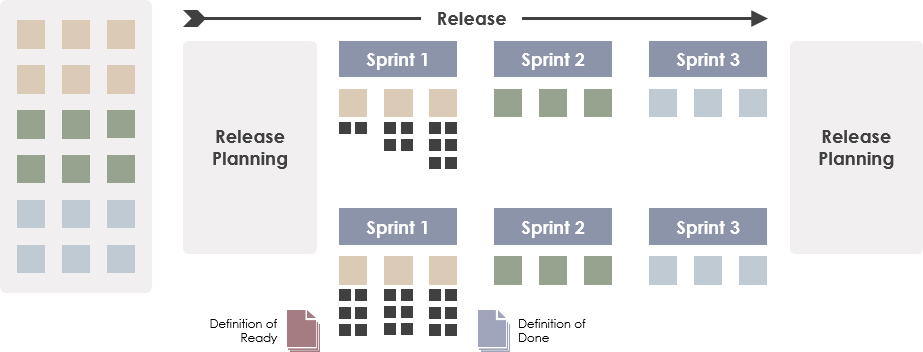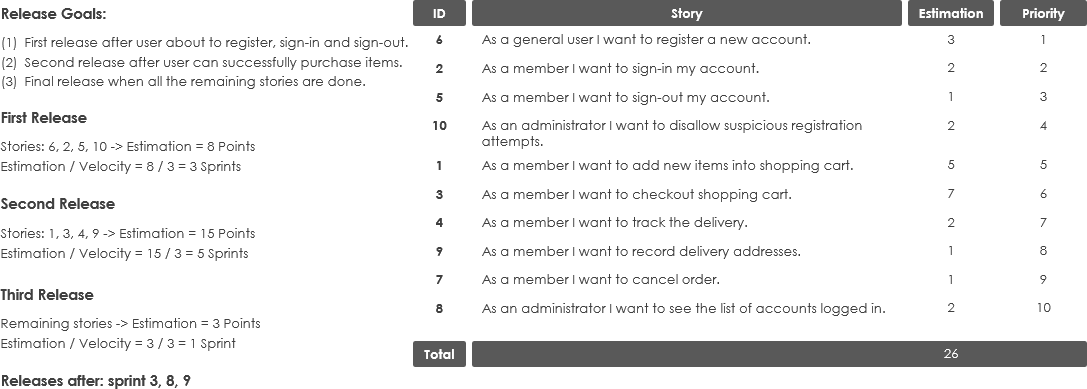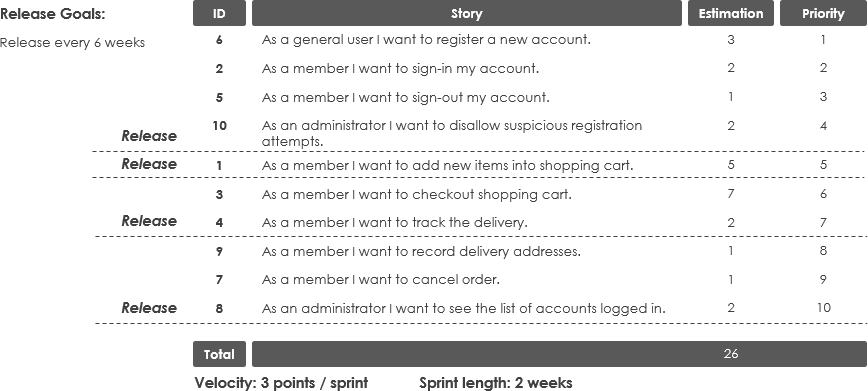The goal of Release Planning is to when various sets of usable functionality or products will be delivered to the customer which to enable the Scrum Team to have an overview of the releases and delivery schedule for the product being developed. With a longer-term plan, the team can align with the expectations of the Product Owner and relevant the project sponsor and provides us some answers for questions such as:
Many organizations have its own cadence regarding release of products to its customers. Some choose to release every sprint. Others group the results of multiple sprints into one release as shown in the Figure below. Still others release as soon as each feature is completed, a practice often referred to as continuous deployment or continuous delivery.

A release plan is a roadmap that reflects expectations about which features will be implemented and when they are completed. Depending on the development strategy, it may either be driven by functionality, in which the objective is to deliver a release once a predetermined set of functionality has been developed; or the planning may be driven by date, in which the release happens on a predefined check point. If the project is feature-driven, the sum of all features within in a release can be divided by the expected velocity. This will then result in the number of sprints needed to complete the requested functionality.
Release planning is a controversial topic in Agile. While we are often asked to provide some up-front estimation on cost and time in the business world, Scrum does not suggest up-front planning. Here are some arguments of not have a release planning:
Although, the actual dates of engagement in the agile world may have less precision as far as committed targets. However, a general delivery roadmap of releases could establish trust and expectation between your team and other stakeholders. Furthermore, Releases should take into account all the additional work that must be accomplished, such as updating the public website and training the customer support team. Here is the main reasons for having a Release planning in Scrum your project:
Release Planning vary in their format. I provided an examples here for both feature / data driven:

If the project is date-driven we can simply multiply the velocity by the number of Sprints and we’ll get the total work that can be completed within the given timeline.

The Release plan is not a static plan which required to be from time to time as the way we manage the product backlog. When new knowledge is available (such as, entries in the Scrum Product Backlog are updated and adjusted), the Release Plan should be regularly revisited and updated accordingly.
| About Visual Paradigm |
 Visual Paradigm help organizations stay competitive and responsive to change faster and better in today’s fast changing environment. Our award-winning products are trusted by over 320,000 users in companies ranging from small business, consultants, to blue chip organizations, universities and government units across the globe. It enables organizations to improve business and IT agility and foster innovation through popular open standards and process frameworks.Visual Paradigm, a killer Agile feature in 2018, introduced Scrum Process Canvas for automating the way a Scrum team to create, manage and deploy software application that empowers the team to continuously improve their performance at unprecedented speed and scale. Visual Paradigm help organizations stay competitive and responsive to change faster and better in today’s fast changing environment. Our award-winning products are trusted by over 320,000 users in companies ranging from small business, consultants, to blue chip organizations, universities and government units across the globe. It enables organizations to improve business and IT agility and foster innovation through popular open standards and process frameworks.Visual Paradigm, a killer Agile feature in 2018, introduced Scrum Process Canvas for automating the way a Scrum team to create, manage and deploy software application that empowers the team to continuously improve their performance at unprecedented speed and scale.
Manage the Entire Scrum Process in One Page
|